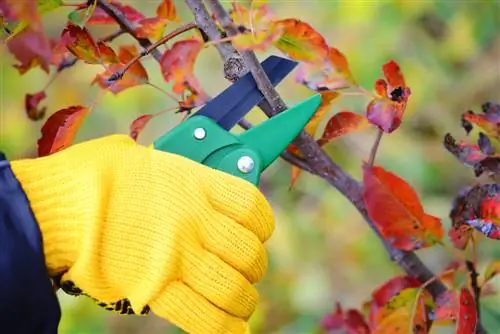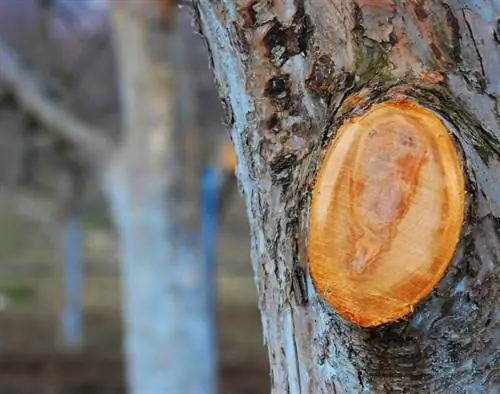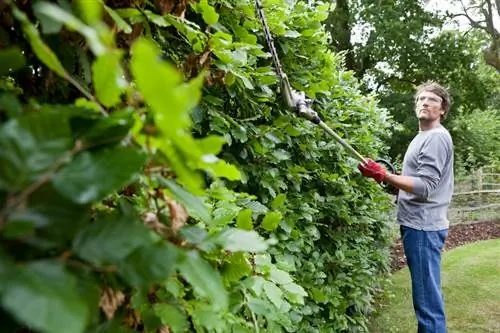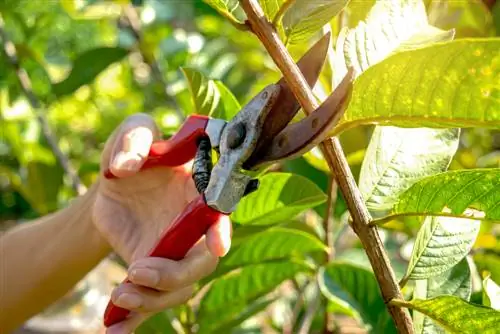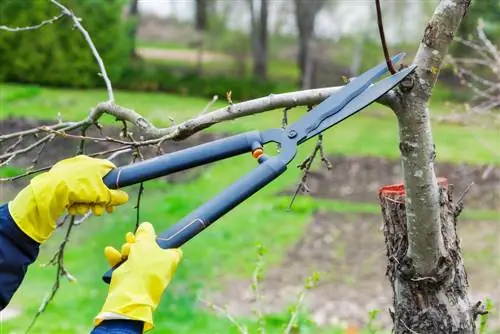- Author admin [email protected].
- Public 2023-12-16 16:46.
- Last modified 2025-01-23 11:21.
Without trees and bushes, a garden quickly becomes boring. However, trees are often quite demanding to care for; at least they need to be cut regularly. When and how best to do this depends on the specific species and its growth and flowering behavior. Many trees are best cut back in autumn to prepare them for winter.
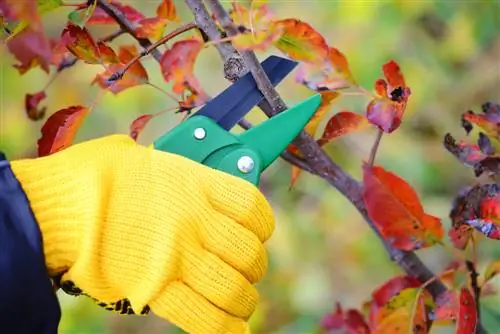
When should you prune trees in autumn?
Autumn is the best time to prune native deciduous and coniferous trees as well as species that tend to bleed in summer. Choose a mild, dry day between September and November, avoid cutting in frost, wet weather or temperatures below minus five degrees Celsius.
When is the best time to prune trees and shrubs
Spring, summer, autumn or winter: In principle, you can cut trees at any time of the year. However, this does not apply to all species. Autumn is the best time to cut down native deciduous and coniferous trees. This is particularly true for species that tend to bleed due to the summer sap pressure - these include maples, birches, poplars and some types of fruit - and can simply be treated more gently in autumn. Fruit trees can also be cut back in autumn, although you should remember that the earlier and harder you cut, the stronger these trees will grow. However, growth is not a priority for fruit trees; instead, more fruit shoots should be formed. You can achieve this by winter pruning, which should preferably be carried out in January or February.
Under no circumstances cut in frost conditions
Whether in autumn or winter: under no circumstances should you cut when the temperatures fall below minus five degrees Celsius. Then there is a risk that the branches and twigs will become brittle and simply snap off. This in turn makes new growth more difficult in the spring. Therefore, you only use scissors (€39.00 at Amazon) or saw if the weather report predicts temperatures in the plus range for a few days. By the way, cutting should not be done in wet or damp weather, as this promotes the development of fungal diseases.
What to cut in autumn
These cutting measures are particularly useful in autumn:
- Thinning out a crown that is too dense
- Removing shoots that grow too close/cross-growing
- Removal of diseased and loose branches to prevent storm damage
- Removing dead wood
- thorough removal of shoots and wind shoots
Choose a mild, dry day between September and November when the sun is hidden behind clouds if possible. Such a climate is ideal for tree pruning.
Tip
Only use sharp/freshly sharpened and disinfected tools for cutting. Pathogens are often transferred from a sick tree to a previously he althy one due to poor hygiene.

